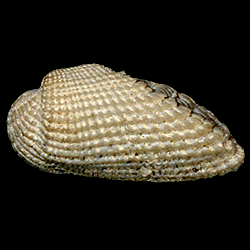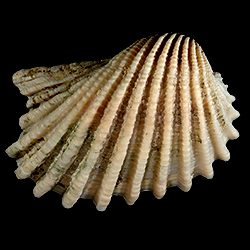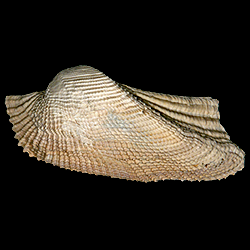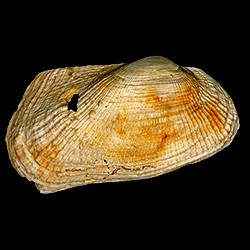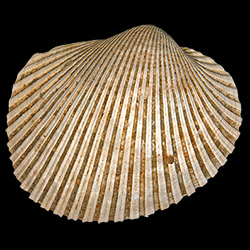
Arcidae
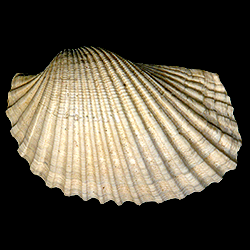
Overview
Common Name: Ark clams
Key morphological features: Shell often nearly trapezoidal or oval shaped. Taxodont hinge dentition; teeth larger at margins than in center. Isomyarian muscle arrangement. Source(s): Cox, L.R., et al. 1969. Systematic Descriptions, in Cox et al., eds., Treatise on Invertebrate Paleontology, Part N, Mollusca 6, Volume 1. The University of Kansas and Geological Society of America. 489 pp. Clarkson, E.N.K. 1998. Invertebrate Paleontology and Evolution, Fourth Edition. Blackwell Science, Oxford. 452 pp.
Geological range: Jurassic to Recent (questionably Triassic) (source: Cox et al., 1969, Treatise N250). The Paleobiology Database includes a small number of records from the Permian and Triassic (Primary data contributors: Hendy, A. J. W., W. Kiessling, and A. I. Miller.).
Geographic distribution: A distributional map for modern Arcidae may be accessed from OBIS. A distributional map for ancient Arcidae may be accessed from the Paleobiology Database (Primary data contributors: Hendy, A. J. W., W. Kiessling, and A. I. Miller.).
Diversity: The WoRMS database recognizes 28 genera and 1,065 species of extant Arcidae (unvetted). The Paleobiology Database recognizes 33 genera and 899 species from the fossil record (unvetted) (Primary data contributors: Hendy, A. J. W., W. Kiessling, and A. I. Miller.).
Paleoecology: All Arcidae are suspension feeders. Species show a range of substrate interactions; some are epifaunal, some are infaunal (with or without a siphon), and some are semi-infaunal. Some species are sedentary (can reposition), while others are actively mobile (can crawl or burrow). Species are either bysally attached to the substrate, or unattached. Source: Todd (2015).
Phylogenetic status: Paraphyletic. Recent molecular phylogenetic analyses by Feng et al. (2015) and Combosch and Giribet (2016) do not support the monophyly of Family Arcidae.
